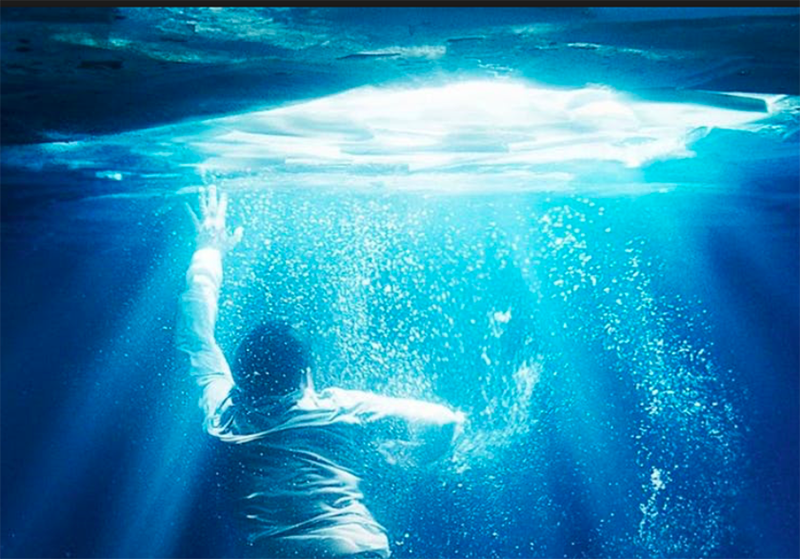
Director Roxann Dawson and DP Zoran Popovic on the Film’s Visual Design
When 14-year old John Smith fell through a crack in a frozen St. Louis, Missouri area lake, he was retrieved from icy waters and rushed to the hospital where he was pronounced clinically dead. The teenage athlete’s brush with death, his miraculous recovery, and the cathartic process of redemption his family and supporters experience are the subjects of the new inspirational movie, Breakthrough.
Co-produced by DeVon Franklin (Miracles from Heaven) and based on a 2017 nonfiction book co-authored by Joyce Smith and Ginger Kolbaba, titled The Impossible: The Miraculous Story of a Mother’s Faith and Her Child’s Resurrection, 20th Century Fox’s Breakthrough stars Chrissy Metz, Josh Lucas, Topher Grace, and Marcel Ruiz as John.
In just 32 days, the crew lensed vital soundstage scenes and completed pivotal outdoor filming in the Crescent Lake and Island Park area of Portage la Prairie, Manitoba, Canada. CGI enhancements bolster the visual impact of the film, but the application of set and even practical lighting is seamlessly stitched into the narrative arc of the plot.
PLSN spoke with cinematographer Zoran Popovic and Roxann Dawson, who makes her feature film directorial debut with Breakthrough. Although perhaps best known for her recurring role as Lieutenant B’Elanna Torres on Star Trek: Voyager, Dawson has demonstrated extraordinary versatility behind the camera, helming episodes of The Mentalist, This Is Us, Major Crimes, Scandal, Bosch, House of Cards, The Good Wife and many others. At press time the Los Angeles native was directing an episode of The Morning Show for Apple, starring Jennifer Aniston, Steve Carell and Reese Witherspoon. Popovic had just returned from Upstate New York where he filmed Clean, a semi-B&W drama directed by Paul Solet featuring Adrien Brody.
Q&A with Roxann Dawson, Director
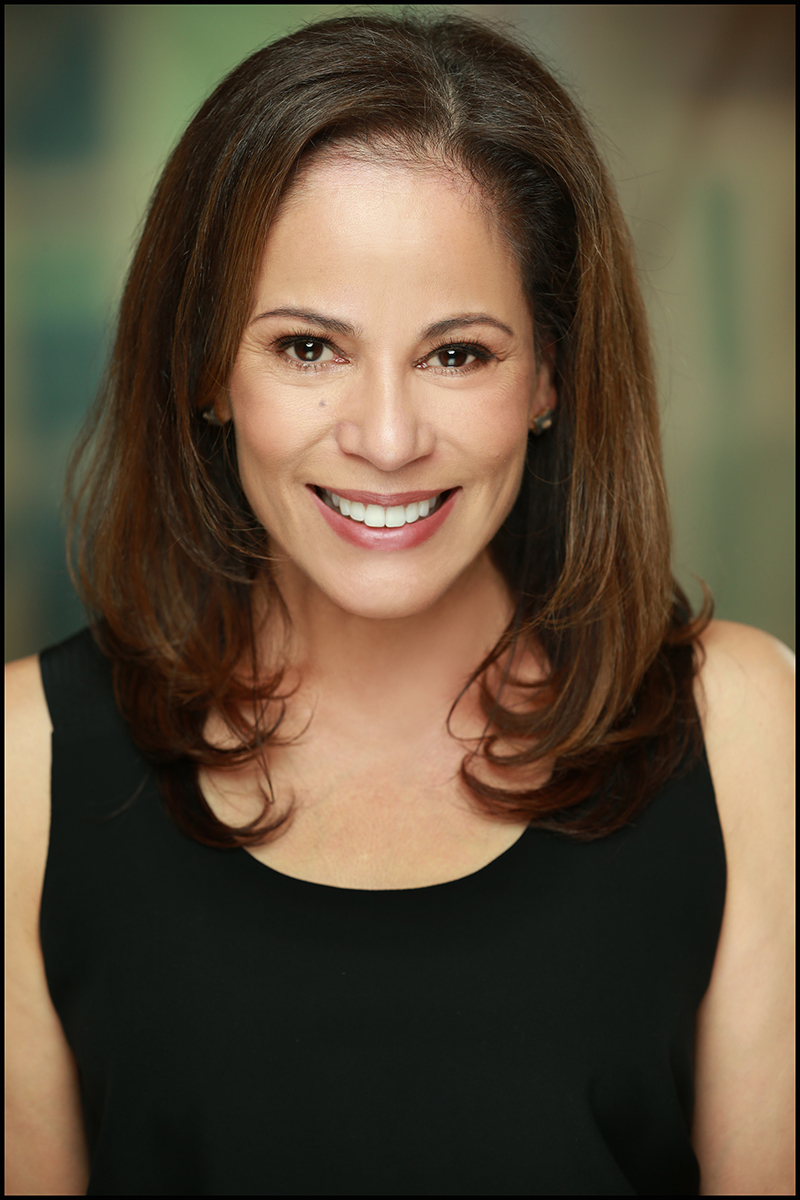
PLSN: Many Hollywood features are not about emotional, uplifting, and spiritual themes. Why did you sign on to do this film?
Roxann Dawson: The minute I read the script I felt I was going to do this film. I think what attracted me to the project was the humanity, hope, and the fact that it’s a true story. I think that there’s a place to tell stories like this without cynicism.
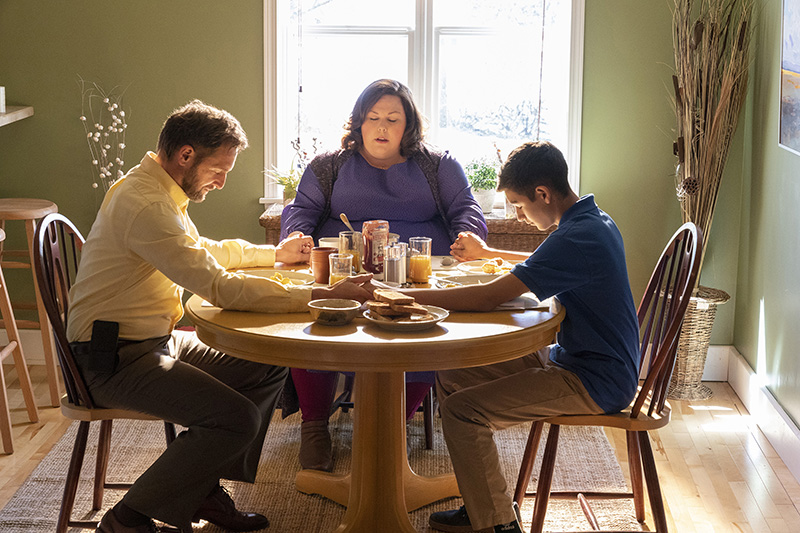
Is it true that you wanted to pull back a bit from making Breakthrough a “Christian” film?
You have a lot of different characters, who were affected by a simple event, and my goal was to tell how it affected the community. It’s also about how this event impacts John himself and how it changes him.
On set the term “magical realism” was used in an effort to communicate ideas.
Magical realism is a term often used when referring to a lot of the Gabriel García Márquez’s books. It sort of takes reality to another level. I might liken it to musicals, when you’re telling a story and people start singing, because that’s the best way they can express their emotions. At times within the story I thought, Why can’t these images take us to a transcendent place? If there’s an emotion that can’t be expressed with realism, take it to the next step.
Maybe it can be expressed in certain lighting choices, the way rooms would be lit. For example: Is John’s bed descending into water? Another example would be when Joyce [Chrissy Metz] is out on the rooftop and it begins to snow. I said this is similar to the moment in It’s A Wonderful Life when George Bailey is on the bridge and is trying to decide whether to commit suicide. He looks for a sign from God, and it begins to snow. In Breakthrough, that moment comes when Joyce realizes things are out of her control and she has to hand them over to God. This was God speaking to her.
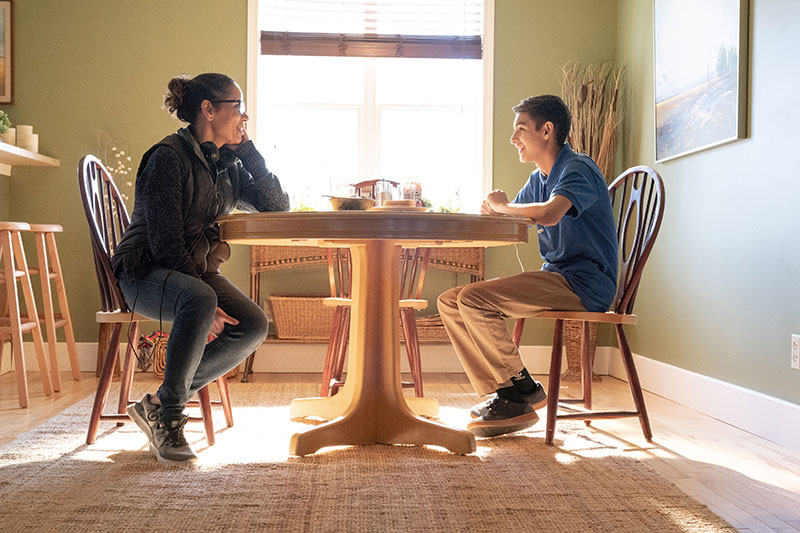
The scene of John falling through the ice is vital to the story. How much of it is software-based graphics?
We had to carefully storyboard the entire sequence knowing that some things would have to be practical and other things would have to be CGI. Some things would have to be done out on a frozen lake and some things would have to be done in a tank…. We also were working at a point in time when the ice was beginning to melt and we needed to move quickly. We found this lake [in Manitoba, Canada] and had to pull off two days of shooting on that lake much earlier then we were supposed to do principal photography, because we were going to lose [the ice]. We were able to do all the exteriors on a lake and also did two days of tank work. We combined practical with CGI, and I think it’s pretty well interwoven.
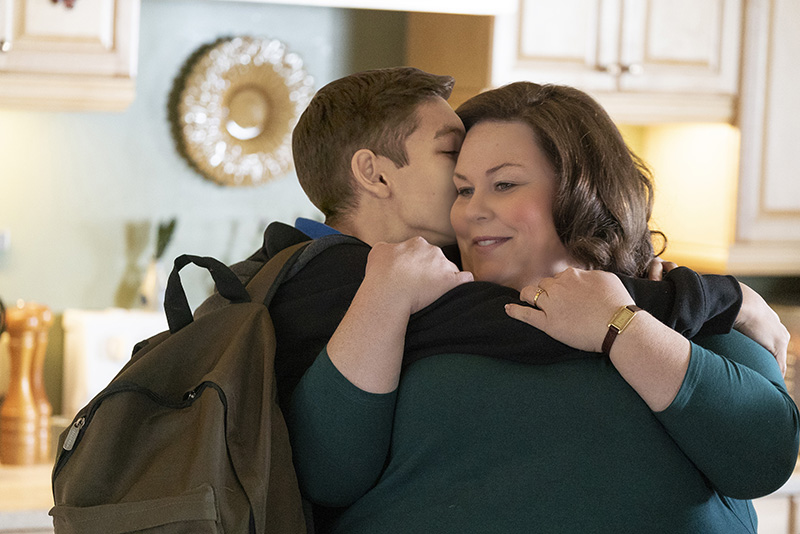
What are the advantages and challenges of working in Canada?
It was freezing cold. [laughs] We were scouting for locations in December [2017]. It was the coldest I think I’ve ever experienced in my life. But we needed that for the lake. In addition, we found a great hospital and a great school [to film in]. We wanted to be able to come out of the winter and into spring, and we were not sure if the lake would actually thaw in time for us to shoot the final scene there. It did. We often talked about this on set. There were too many things that would happen that were coincidental. We would look at each other and we felt like we were blessed doing this film.
Q&A with Zoran Popovic, Director of Photography
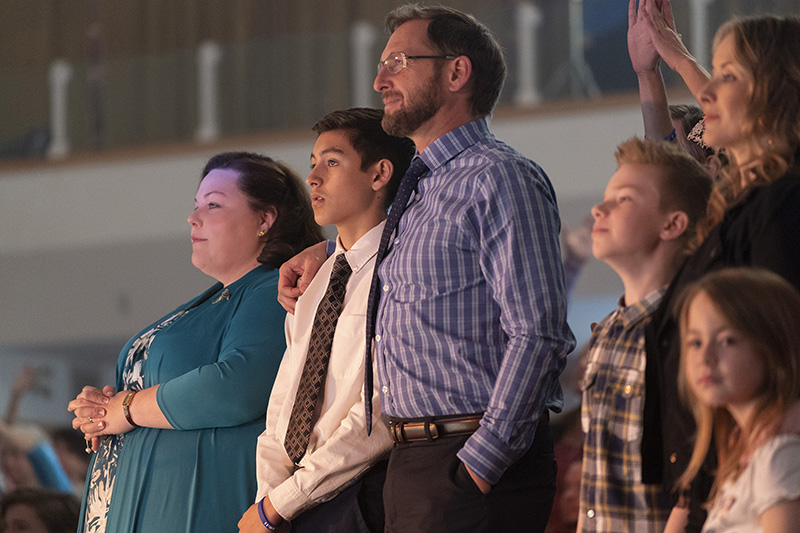
PLSN: As the cinematographer for Breakthrough, how did you approach the concept of light for this film?
Zoran Popovic: This movie was the perfect vehicle to explore the motif of light. In Christian mythology and throughout the history of the Western World, Jesus and God were represented as the light. I wanted the look of the film to resemble somewhat the old painters, Rembrandt and Caravaggio, mainly, in their expression through the direction and quality of light.

How did you shoot the boy falling through the ice?
We decided to use theatrical spotlights. We used the cyan [color filter], which was probably a steel blue from Rosco. The scene with Marcel drifting through the water was done dry on a soundstage in Canada. To create the water effects we had a big fan to move his wardrobe and hair. On action Marcel [Ruiz], the actor, was lowered from a wire, the camera moved up, passed close to his face, and then was panned around, 180-degrees, as the actor fell. The theatrical lights that were silhouetting him turn into key lights, lighting up his face. Then Marcel slowly descends into the darkness and we fade into black. From there we cut to a close up of him in bed and the story really begins.
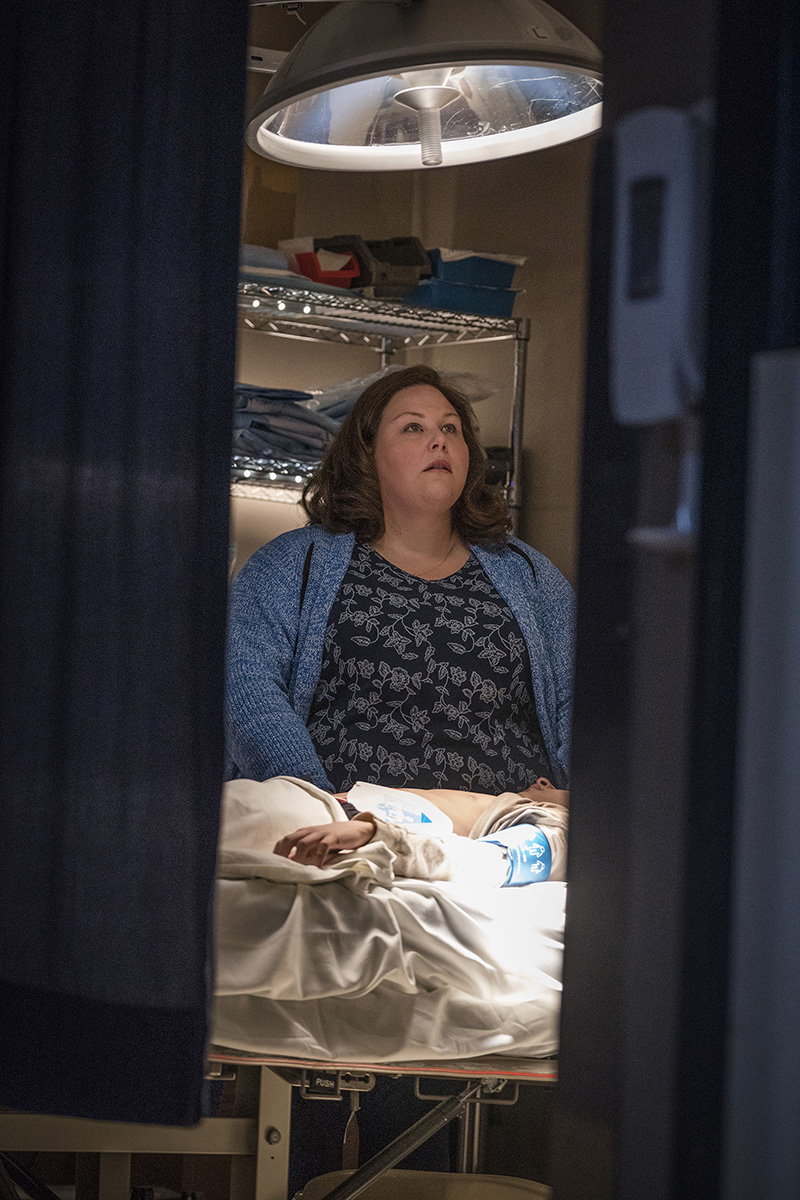
It sounds fairly synchronized.
We used the theatrical moving lights with DMX programming, which was connected to a [lighting] board. The camera was on a crane and it was facing straight up. Marcel was suspended from a wire and the light was right above him, right next to his support wire, shooting light straight down. We used a Condor with an eighty-foot arm and … masked the bucket and arm with black Duvetyne. We were shooting 60 frames a second. The light [M40 HMI] was on another Condor, on a 20-foot pipe, backlighting Marcel as he was lowered down towards the camera, creating a silhouette. Theatrical lighting worked perfectly. It silhouetted him in the first part of that sequence and then it lit his face as the camera passed him.
Light seems to have a special power in this film.
You see a deep ray of light shooting down at the beginning of the fall [through the ice]. We see it, again, at the end of the film when the mother decides to let go. When the hospital takes the boy off the life-support machines, we have the same basic theme recurring, reinforced visually through the light from above shooting down. The boy is on the hospital bed and it appears as though he’s sinking to the bottom of the lake. Then the light comes up, he wakes up, and he swims to the surface. This sequence provides a kind of connection for the fall and resurrection. In the hospital room, when the mother calls the Holy Spirit to bring her son back, I use super-hard light that was shooting straight at him. It’s almost like the mother and the son, that motif…
The Pietà?
Yes, exactly. In paintings it always seemed to be a straight light shooting at them and letting everything else fall into the darkness.
What about the hospital scenes? How were these lit?
I worked closely with the production designer [Gae Buckley] and I put LED lights around the bed and walls of the room, so it looks very high-tech. The LED lights were dimmable, and we were able to change color. We used those for the night interiors. We changed the colors of the lights depending on the mood of the room. The lights powered the mood of the characters, too, to give the story some added tension, if there was some disagreement, or to give constant reminders that this was a battle for life and death. I wanted to create shadowy looks and have Joyce, the mother, move from the light to the darkness, because at points she was not actually the nicest character.
How tricky was it filming the candlelight vigil?
I decided to go completely unrealistic with the lights. We turned all the lights off and we had the motif of the cyan light — the light that was used at the opening of the film. The whole scene was lit with the cyan coming through the venetian blinds on the windows … and also the flame from the candles. At that moment, the boy’s eyes start to tear up and a tear falls out of his eye. The wind blows and there is moonlight. The biggest problem in that scene was keeping all the candles lit because it was pretty windy.
We shot on [Arri] Alexa cameras with anamorphic lenses, which weren’t very fast. The Alexa has such huge latitude, though, that it picked up the candlelight very easily. For the whole vigil it was a couple of 2K bounces, and we had a 4K HMI on the Condor, as a backlight. We also had a bunch of Par cans on the ground, spread around. The candlelight was lighting people. I loved using the real flame. The first five or six rows of people were holding real candles and the rest had electric prop candles. No real issues in filming or in the result, I think. If you see a few candles flickering around, you tend not to pay attention that much to the rest.
Breakthrough is set for release on April 17, 2019, just before Easter. For more information, go to www.breakthroughmovie.com.


